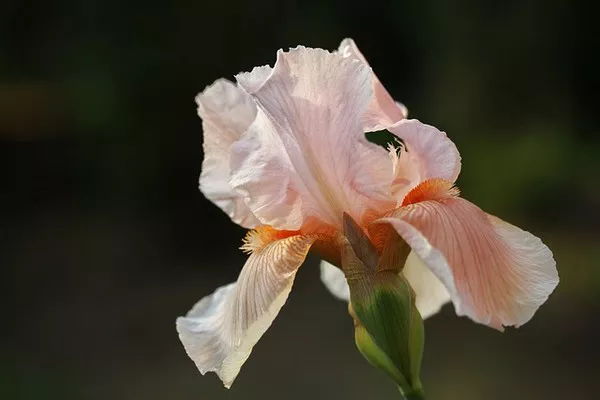In the realm of botanical wonders, the iris flower stands as an embodiment of grace, elegance, and enchantment. Revered for its striking appearance and symbolic significance, the iris has captured the fascination of horticulturists, artists, and poets alike. From its captivating colors to its intricate structural details, the iris flower is a masterpiece of nature’s design, an enduring source of inspiration and admiration.
See Also: What to Do With Iris After Flowering: Essential Care Tips
Taxonomical Prelude
The iris flower, scientifically known as Iris, is a genus within the Iridaceae family, which encompasses around 300 species. These species are distributed across diverse habitats, ranging from temperate zones to arid landscapes, and can be found on nearly every continent. The word “iris” finds its origin in Greek mythology, where the goddess Iris, a messenger of the gods, was believed to use a rainbow as a bridge between the heavens and Earth.
Color Palette Extravaganza
One of the most captivating features of the iris flower is its remarkable spectrum of colors. From deep purples and velvety blues to radiant yellows and pristine whites, the iris presents a diverse palette that rivals even the most imaginative artist’s creations. These colors are often enhanced by intricate patterns and subtle shadings, adding depth and complexity to the petals. Each color and variation brings forth a unique character, inviting observers to delve into the myriad interpretations and associations they inspire.
Structural Symphony
The structural composition of the iris flower is an exquisite symphony of form and function. At first glance, the flower presents a striking visual display, with three outer petals, called falls, and three inner petals, known as standards. These petals work in harmony to create a distinctive “landing pad” for pollinators. The falls often boast elaborate markings, veining, and contrasting shades, guiding insects toward the flower’s reproductive organs.
The standards, positioned elegantly above the falls, provide a contrasting backdrop to enhance the falls’ visual allure. Together, the petals exhibit a unique blend of symmetry and asymmetry, a balance that draws observers into the heart of the flower’s design. The intricate variations in petal length, curvature, and positioning also contribute to the iris’s visual complexity, inviting a closer examination of its inner workings.
Architectural Marvel: The Iris Anatomy
Delving deeper into the anatomy of the iris flower unveils its true architectural marvels. The flower’s reproductive structures, comprising stamens and pistils, are encased within the petals, ready to interact with visiting pollinators. The stamens, male reproductive organs, bear pollen sacs at their tips, ensuring the plant’s genetic continuity through successful cross-pollination. Surrounding the stamens are the delicate styles and stigma, the female reproductive organs that receive pollen and facilitate fertilization.
A characteristic feature of the iris flower is the presence of a specialized petal called the “signal.” This unique petal, usually located on the falls, acts as a landing guide for pollinators. The signal often exhibits a distinct color or pattern, which serves as a visual cue to attract insects. This remarkable adaptation demonstrates the flower’s evolutionary strategy to ensure successful pollination by ensuring that pollinators deposit and pick up pollen efficiently.
Cultural Symbolism and Significance
Beyond its breathtaking physical attributes, the iris flower holds deep symbolic meanings in various cultures. In Greek mythology, the iris was associated with communication and was believed to link the earth and the heavens. In Ancient Egypt, the iris was revered as a symbol of renewal and resurrection, often placed on the chests of the deceased. Moreover, the iris flower’s name bears symbolic significance – in the language of flowers, the word “iris” conveys sentiments of eloquence, wisdom, and cherished friendship.
Horticultural Splendor
The allure of the iris flower extends into the realm of horticulture, where it has become a popular choice among gardeners and enthusiasts. The cultivation of iris species and hybrids has given rise to an astonishing array of varieties, each showcasing unique combinations of colors, patterns, and sizes. Gardeners have embraced the challenge of hybridizing irises to create novel cultivars that celebrate the flower’s inherent beauty while pushing the boundaries of artistic expression.
In Conclusion
The iris flower, with its enchanting colors, intricate structure, and rich symbolism, stands as a testament to the beauty and complexity of the natural world. Its visual allure captivates the eye and stimulates the imagination, leaving an indelible mark on those who encounter it. Whether admired for its delicate petals, its architectural elegance, or its cultural significance, the iris flower stands as a timeless masterpiece that continues to inspire and captivate all who pause to appreciate its splendor. As we gaze upon the iris, we are reminded of the magnificence of nature’s artistry and the boundless wonders it has to offer.


